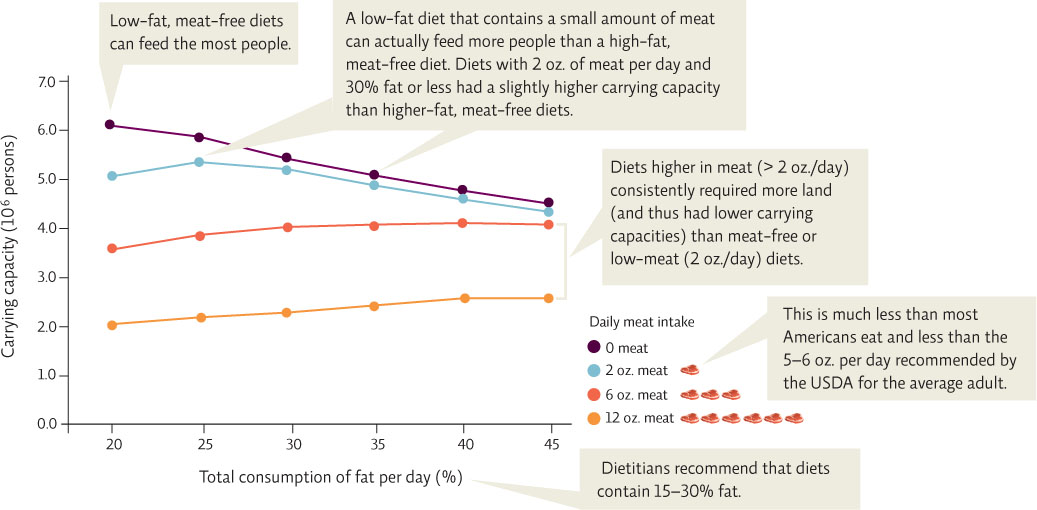A 2007 study by Christian Peters of Cornell University compared the number of people that could be supported with locally produced food from farmland in New York State. His research compared diets that varied in meat and fat content (“meat” included meat, milk, and eggs), testing a range that included diets lower and higher in meat and fat than that of the average American, who consumes 6–8 ounces of meat per day, with roughly 40% of calories coming from fat. Though eating more than 4 ounces of meat per day required more land and reduced the number of people the land area could support, diets that contained a small amount of meat (2 ounces per day) were actually the most efficient in terms of carrying capacity, but only when daily consumption of fat in a meat-free diet surpassed 35%.
